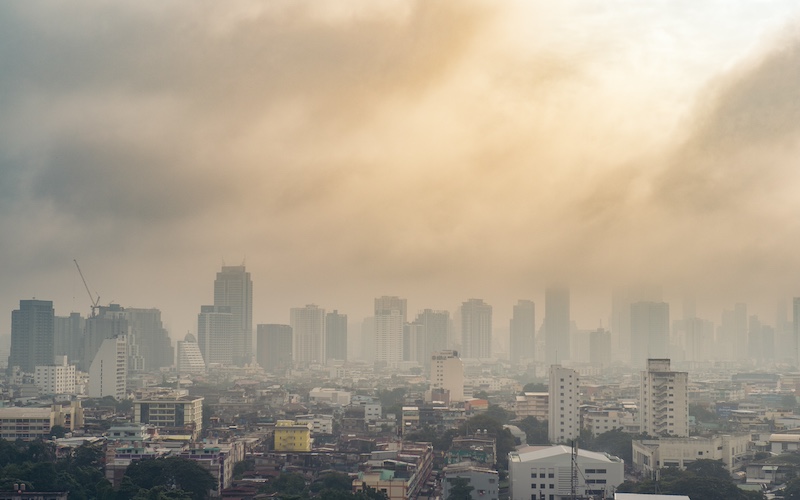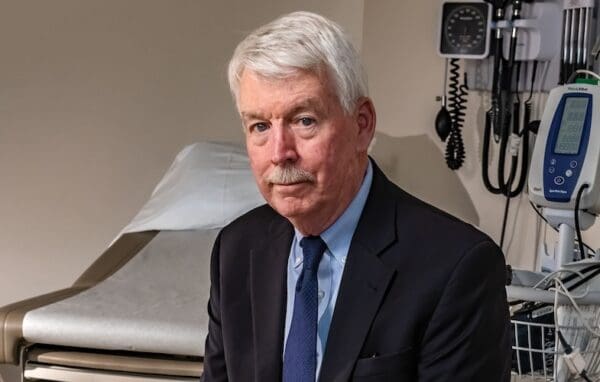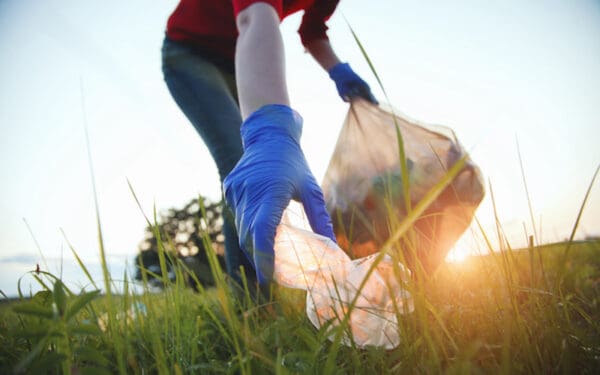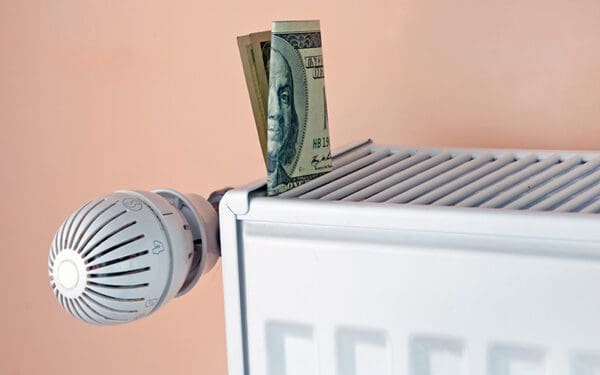
Air pollution is getting worse, thanks to climate change, but a changing climate leads to more air pollution in an unhappy feedback loop. Photo: Shutterstock
Last summer, the skies around New England were hazy with smoke. Wildfires raging in Canada led the EPA to advise most New Englanders, especially those with medical conditions, to stay indoors with the windows shut. It wasn’t how most of us would have chosen to spend a summer afternoon. Nor was it practical advice for those whose work forces them to spend time outdoors.
Unfortunately, the smoky skies of 2023 are no longer an anomaly. Air pollution across the United States is getting worse. Why? Because of our planet’s warming atmosphere. You might say the gains made in air quality in the first half of the 20th century are going up in smoke.
We are now caught in an air pollution feedback loop in which the effect of air pollution on the environment is to cause warming temperatures that lead to disasters like wildfires. And wildfires, of course, cause even more air pollution. Smoke from wildfires, mixed with carbon emissions from factories, planes, gas-powered cars, and buildings warmed and cooled by fossil fuels, creates carbon pollution that is overheating the planet. It is also taking a human toll –on our health and productivity, especially in environmental justice communities where air pollution is often most concentrated.
Air Pollution Effects on the Environment: Living the “Climate Penalty”
Some researchers have attributed the poor air quality we are experiencing to the “climate penalty.” Extreme weather fueled by climate change –drought, heat waves, and wildfires– is helping to pump up the volume of specific pollutants (ozone and fine particulate matter called PM2.5 found in smoke) way above safe levels. Even as we switch our gas guzzlers to electric cars and invest in electric heat pumps, scientists predict that some air pollutants will continue to increase by as much as 50% in the next three decades.
Not all of us will be breathing in the same bad air, though. Air quality is likely to worsen far more in the Western United States, thanks partly to wildfires. Indeed, it’s already happened. But the thing about air is that it doesn’t stay in one place.
Researchers say that the deteriorating air quality, which is so dramatically evident in the West, has now spread across the country. Last summer was a case in point, as we saw a murky haze settle over cities from Burlington, Vermont, to Washington, D.C. As a result of all these factors, one in four of us is breathing unhealthy air. And not just in summer. The overheated atmosphere is worsening air quality in the winter, too, by causing temperature inversions that trap microscopic bits of pollution near the earth’s surface when temperatures drop.
Air Pollution is More Damaging Than Many of Us Realize
By now, we all know that breathing in air pollution is bad for us. The health effects run from relatively minor irritation of the eyes, nose, and throat to an increased risk of heart attack and stroke. Long-term exposure to air pollution can cause cancer and damage the immune, neurological, reproductive, and respiratory systems. Recent studies have even found a correlation between air pollution and Alzheimer’s.
Some of us are more exposed than others. Residents living in low-income communities or communities of color are more likely to experience asthma and other health problems because these areas have been targeted for the build out of factories and highways. Study after study reveals that people living in communities of color breathe in more particle pollution than those living in predominately white ones.
The good news is there is a way to clean up all this pollution. We’ve got to get off fossil fuels and stop pumping carbon into the air. That’s why CLF fights each day – to hold polluters accountable and to push for clean energy. But as the trends are showing us, even these efforts may not completely plug the air pollution spigot.
We need to adopt strategies that can proactively clean up our polluted air, too, like creating more green spaces and planting more trees. We must update and modernize our infrastructure by building green roofs, parks, and neighborhoods designed to filter our air with abundant air-pollution-absorbing plant life. CLF is working on this, too. By making our cities resilient to extreme heat and rain helps we reduce air pollution at the same time.
Taking our air pollution problem seriously means understanding it for what it is – both a climate and a health threat. We’ve figured out the problem, and now it’s time to implement the solutions. Once we do so, we’ll all breathe a little easier.
This is one of an occasional series revealing the truth of environmental issues.



